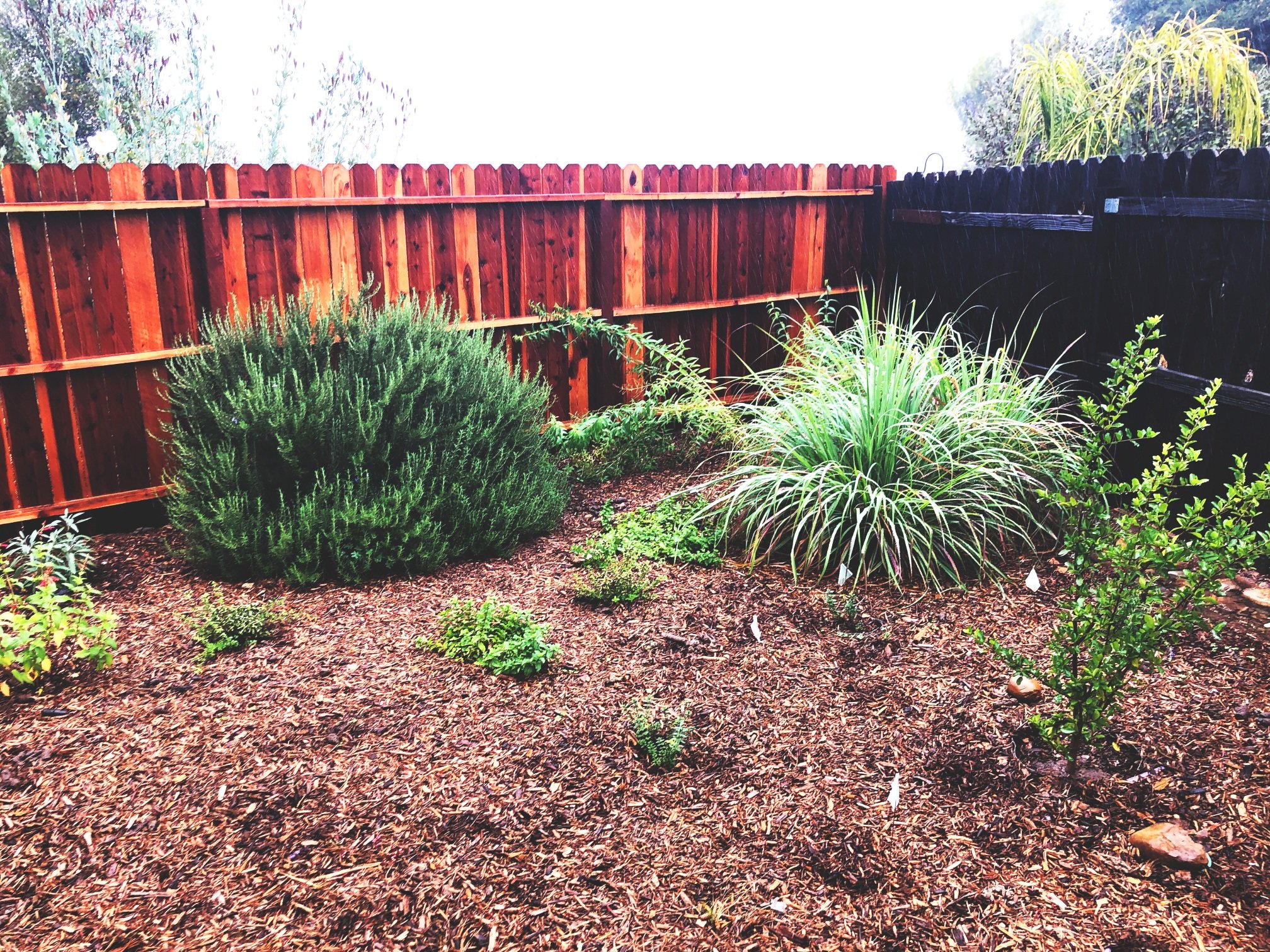
MULCHING
What is Sheet Mulching & Why Does it Matter?
Surface Mulching
Surface mulch is organic & inorganic matter spread around landscaped areas to retain moisture in soil; prevent weed growth & erosion; build & enrich soil with organic content & minerals; regulate soil temperature & protect plant roots.
Sheet Mulching
Sheet mulching recycles or replaces lawn & weeds, builds soils & sets the stage for Climate Appropriate Planting.
SURFACE MULCHING
DO:
DO place mulch mixture at a thickness of 3”-4” atop topsoil, and up to 6” around trees, consult CNPS for more prepping tips.
DO place mulch up to base of shrubs and perennials, leaving crown exposed (see CAP templates)
DO consider using inorganic mulch such as gravel and rocks around desert and riparian plants. Know what mulch plants prefer by visiting Calscape.org.
DO consider including a rain garden on your site where water collects to further increase soil moisture and water retention.
DO use local mulch chipped from variety of sources and sizes.
DON’T:
DO NOT use synthetic materials such as rubber pellets, landscape fabric, or anything containing plastic.
DO NOT pile mulch up around trunks of trees or stems of plants.
DO NOT put oak mulch of one oak on another without asking if source oak was healthy and free of fungus.
SHEET MULCHING
Prepare site & materials.
1. Remove exiting turf of plants if invasive. This can be done by hand (low impact)using a shovel or sod cutter.
2. Mow existing turf if not an invasive grass. If the turf is not invasive, mow & leave grass clippings in place.
3. Create a shallow trench around the edge. Remove existing turf around the entire perimeter & dig a shallow trench the width of the shovel.
4. Prep & soak cardboard. Remove all tape, plastic labels, etc. from cardboard & soak in a wheelbarrow filled with water.
5. Water site thoroughly.
Lay down mulch layers
Layer 1: Compost. Apply 1-2” of finished compost, aged manure, or grass clippings. Water thoroughly.
Layer 2: Barrier. Apply 3-4 layers of clean, soaked corrugated cardboard overlapping to ensure no areas are exposed to light. Pay special attention to cover the soil along the perimeter trench as well. Water thoroughly. Ensure there are no gaps in the cardboard. If the cardboard is thin or contains holes, add an additional layer.
Layer 3: Compost. Apply 1-2” of finished compost. If cardboard dried, rewet before applying compost. Skip this step if not planting areas in the near future.
Layer 4: Woodchip Mulch. Apply 4-6” of Woodchip mulch. Be sure to add mulch inside the perimeter trench. This is where weeds will want to creep in. Water thoroughly. Various sizes of wood chip mulch is best, instead of uniform playground mulch.
Final touches & watering
Walk around the perimeter & over the mulched area to make sure all areas are sufficiently covered.
Water the site as needed to keep the cardboard hydrated before, during & after the sheet mulching process to aid in decomposition & prevent moisture loss from the soil to the cardboard.
Multiple Benefits
FIRE RESILIENCE
FOOD SECURITY
GROUNDWATER RECHARGE
EXTREME HEAT REDUCTION
HEALTHY COMMUNITIES
Related Tools
Climate Appropriate Plantings
Rain Gardens
Rainwater Harvesting
Pollinator Corridors
Greywater - Sink/Shower
Greywater - Laundry to Landscape



















